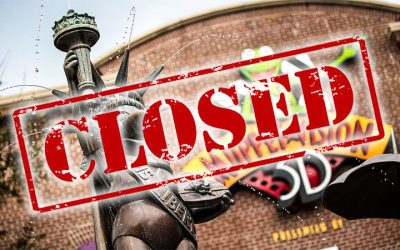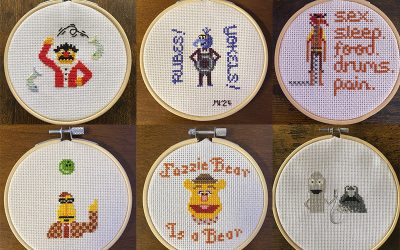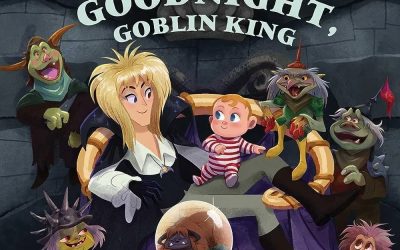Muppet Gals Talking is a new series of interviews and spotlights on female-identifying puppeteers, puppet builders, and other creatives who’ve worked with Jim Henson and the Muppets. This series is researched, written, and expertly produced by journalist Drake Lucas.
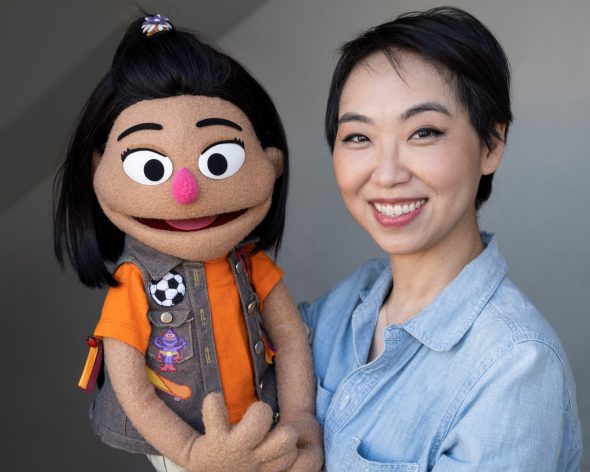
The character of Ji-Young, a puppet of a Korean-American girl, was created to help others feel a sense of belonging, a lesson that puppeteer Kathleen Kim still grapples with.
“Up until this year, I just figured I am here by accident. I wanted to play it safe and keep my head out of the shot,” she said. “I’ve only started to come into my own this year, I feel like.”
Kathleen references herself as lucky and undeserving to be a puppeteer, something she says she fell into in her mid-30’s when others had worked their whole life for the opportunities she has had.
But as a child Kathleen knew when Sesame Street came on before she could even tell time, and, like many puppet enthusiasts, she watched it for longer than many other children her age. Her parents were immigrants from Korea and they mostly spoke Korean at home, but Kathleen spoke perfect English when she went to pre-K and she credits Sesame Street in part.
It was on Sesame Street that she saw the first Asian character she can remember that wasn’t playing some typical trope like a funny best friend with an accent. In the segment with the song “Two Little Girls in a Dollhouse” where – as the name might suggest – two little girls play with a dollhouse, one is blond and white and one is Asian. She didn’t think Asian children could just be on TV doing normal things, so she just assumed the girl was white and somehow just looked Asian because, she thought, “they don’t put people like me on TV.”
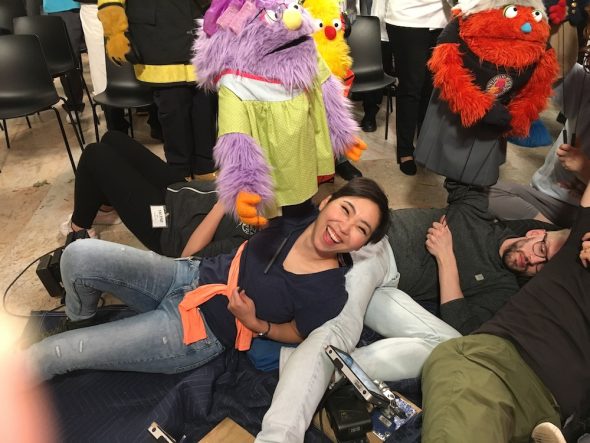
Kathleen said her parents weren’t sentimental. They didn’t spend afternoons reading to her or playing with her. For her, shows like Sesame Street and Mr. Rogers’ Neighborhood provided a safe and nurturing space.
“It was the one place that felt like me as a kid being honored. The shows catered to my intelligence and creativity,” she said. “I felt seen and validated. They explained the world to me in a way that was fun and smart and had respect for children.”
She decided to pursue a career in children’s television, so she could help give that to other kids.
Her parents wouldn’t let her go out for the drama/theater club in high school, which they didn’t consider serious enough. She admits even television production was a bit of a rebellion, but she could take classes in it, which eventually led to a career at Nickelodeon and Discovery Kids. Now, in addition to being a puppeteer, she is a freelance producer for reality television, including food, travel, and lifestyle shows on networks such as the Travel Channel and TLC.
Sesame Street “came in through a side door.” Her husband was doing improv theater and found a class that was puppetry and improv, so he signed them up despite her lack of experience in either art. She enjoyed the class and joined a puppet improv group. She was also invited by the class’s instructor, David Fino, to help assist on some shows he was working on, including The Fuzz, an independent film involving puppets. She said they wanted the puppets to be gritty, so shoots were in places like roach-infested hotel rooms with cigarette burns on the beds. Most people there didn’t understand puppets, so they were asking the puppeteers if they could “get lower” even when they were already on the ground. She said it was a bit of a nightmare. “But even still, it was so fun.”
She was in her 30’s and thinking of having kids, so she didn’t feel like she could leave the career she had built to be a starving artist. And she didn’t think of herself as an actor or performer. Puppetry remained a hobby.
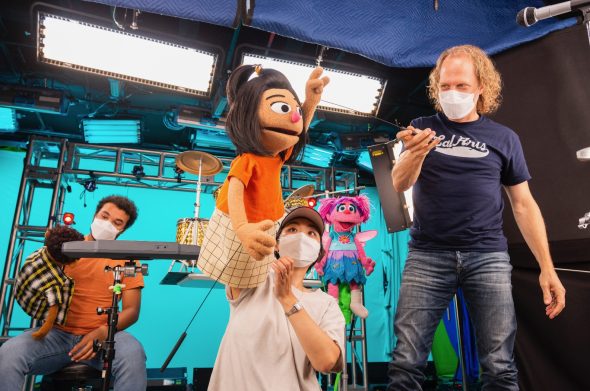
In 2014, Sesame Street announced a puppetry workshop. Since everyone else from the puppet improv class was submitting a tape, she decided she may as well try. To her surprise, she was accepted.
“I thought it was just those three days,” she said. “I was like, I had fun, I got to touch a Muppet, I will treasure this week forever.”
But in 2015, some of the people from the workshop were called back for three days. She was pregnant with her daughter, but didn’t tell anyone until the final day, admitting, “I didn’t want them to think they couldn’t shove me under a table.”
Her first day on set, puppeteer Peter Linz picked up a small yellow feather that had fallen off Big Bird and gave it to her as a souvenir. Kathleen ran to put it into her wallet in the Green Room where Caroll Spinney and his wife, Deb, happened to be. Although Caroll was not performing Big Bird, he was still doing the voice. He told her the feather was “just a little one.” Flustered and not knowing what to say, she mumbled something and ran back to the set.
Only to feel a tap on her shoulder as she was under a table assisting Leslie Carrara-Rudolph on Abby Cadabby. She turned around to see Caroll bending down to hand her a large Big Bird feather, which she now has framed and hanging in her house.
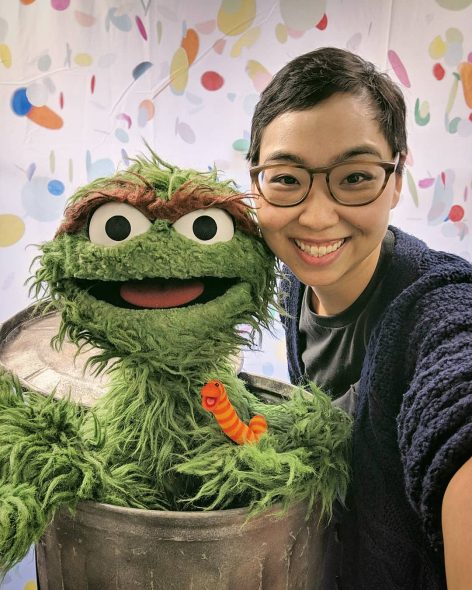
She kept being called in for a few days to work on set. Then in 2017, she was diagnosed with breast cancer. She was still breastfeeding her daughter and her life centered on being a mom, so the diagnosis put all that in jeopardy. She didn’t want to leave her daughter. She felt guilty about maybe not being able to give her daughter a sibling and about not being as present as a mom during her treatments.
Following her mastectomy and in a chaotic night in which she was attending a Solange Knowles concert and fielding texts from her mom about her daughter’s lost stuffie, she received an email from puppeteer Matt Vogel. Thankful that it meant she would get another few days on Sesame Street, she opened it up to read an invitation to be one of four puppeteers in a new mentorship program. Despite the difficult timing, she also called this opportunity “the greatest gift.”
“You realize at some point that you just got a peek into mortality. But the truth is people die all the time and you don’t know when,” she said. “Life is short and our time here and with each other is so precious. Why wouldn’t you do what gives you the most joy?”
The puppeteers on Sesame Street were always saying to “fail big,” to try something fun and new without ruining the shot, if possible. Kathleen wasn’t ready.
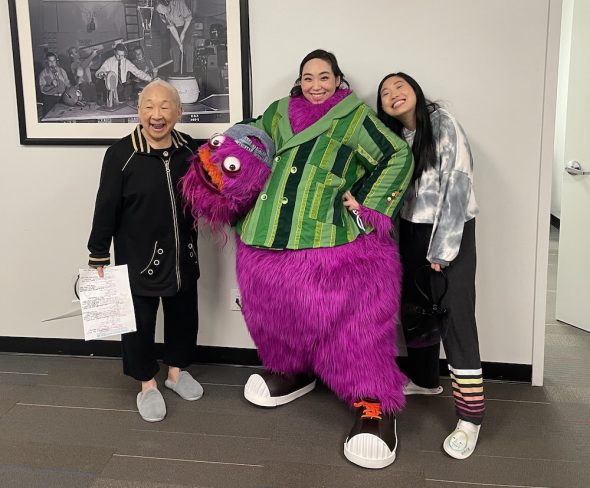
She was hired to perform a big walk around character on Awkwafina is Nora from Queens. It was her first puppetry job without anyone else she knew and she was the only puppeteer on the set. The puppet, Toeknee, was big and ugly, a childhood imaginary friend of Awkwafina that returns because her character’s dad starts dating someone. The puppet’s mouth didn’t open, so they didn’t intend to use Kathleen’s voice.
The job was on the same day that a man shot six Asian women after targeting three spas on a killing rampage he described as an attempt to limit “temptation.” Kathleen was crying in her trailer over the news, scared and angry. Then she put on the purple, hideous puppet.
“I was like, you want to put Asian women in a box?” And she unleashed a violent, aggressive character to match the puppet. They ended up keeping her voice.
Kathleen had made a lot of excuses over the years for why people were hiring her, maybe because she was nice or because she knew post production.
“But that was me,” she said of Toeknee. “I was funny and they liked it.”
She called puppetry a weird art form – because of the monitors, puppeteers are looking at their work in real time. They have to be self-aware and comfortable with themselves. Fear of doing well can keep them from connecting. Being Toeknee, fully in the moment, helped her realize what she needed to do as a puppeteer.
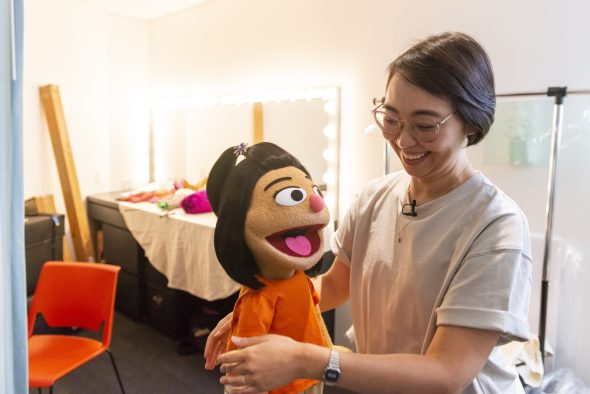
In May of 2021, the Asian American Foundation reached out to Sesame Workshop about addressing racism against Asians, in part because of an increase in harassment and attacks against Asians during Covid-19. Kathleen and other Asians working at Sesame Street, were invited to give their perspective. From that, Ji-Young was created. Between June and mid-September, Rollie Krewson built the puppet and Sesame Street shot a new special, “See Us Coming Together”, focusing on Asian culture and addressing racism.
Kathleen not only performs Ji-Young, she was also a part of discussions that went into creating her. She said Sesame Street always wants to do the right thing. They have focus groups and cultural consultants. But they don’t have Asian people on the curriculum team and have only one Asian writer. She and the other Asians on staff felt a responsibility to ensure that Ji-Young was real to them.
Kathleen recognizes that she plays the character because she is Korean, but she also recognizes the value she brings to the character because she is Korean. And she described how she and Ji-Young make each other braver and gather strength together.
“For someone who has been like, I’m not going to steal the scene, I decided if this is the hill I die on for speaking up, for making sure the character feels authentic to me, then so be it,” she said. “I inserted myself in conversations when maybe otherwise I would not have felt so emboldened.”
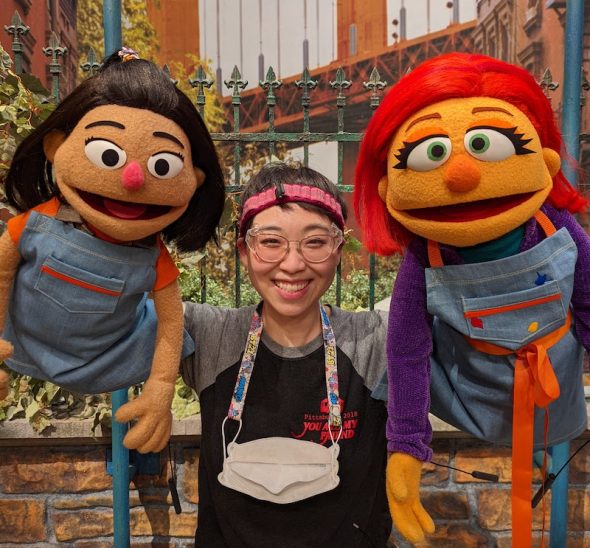
It was a turning point for her to feel like she did belong. So did Ji-Young. And being a puppet rather than a human or someone animated meant that those watching can project themselves onto her.
And they have. Kathleen has heard from many Asian children – and adults – who connected to the puppet. She described meeting the mother of a Korean child who was on set. When the puppet appeared, the mom held the puppet’s hands and started crying because Ji-Young was so important to her. Kathleen said Asian-American parents, especially, see how much of this representation was missing in their own childhood.
“Having a Korean hyphen American character on a deeply American legacy show feels deeply validating,” Kathleen said.
She acknowledged that Sesame Street has addressed racism through human characters since it started, but said now the show is tackling diversity and inclusion in a different way than the show – or its audience – was ready for in the beginning. Ji-Young was not just for one special. She is now a part of the show, sometimes sharing her Korean culture and sometimes just a kid playing with others, teaching the lesson of inclusion just by her existence.
Kathleen is still getting used to the experience of being a celebrated puppeteer on Sesame Street, promoting the show and Ji-Young through talk shows, podcasts, articles, and even the Macy’s Thanksgiving Day parade.
Despite all this, for someone who isn’t comfortable with attention, puppetry is a good fit. As proud as she is of Ji-Young she can also sometimes just be the legs of a dancing cow.
“It’s so freeing,” she said of puppetry. “You can be anything.”
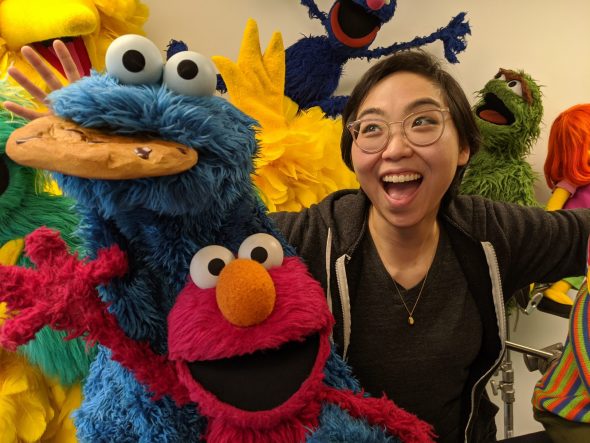
Click here to learn to play electric guitar on the ToughPigs forum!
by Drake Lucas

